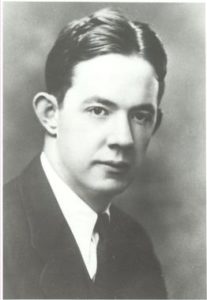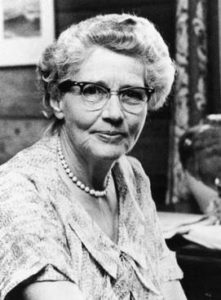James “Jim Boy” McKenzie of Lonaconing, Md., had lived nearly four years with only three-quarters of his heart, but time was running out for the young boy.
When Jim Boy was born in 1946, it was without the right ventricle of his heart. The right ventricle is one of the four chambers of the heart. It pumps deoxygenated blood from the heart through the lungs and back to the left atrium in the heart.

Dr. Alfred Blalock
Without the ventricle, Jim Boy was able to live but he suffered from a unique version of the Blue Baby Syndrome. Blue babies have poorly oxygenated blood that is blue in color rather than red and this blue blood causes their bodies to look blue. In Jim Boy’s case, it was only his hands, feet and lips that apparently turned blue.
His parents had taken Jim Boy to Johns Hopkins Hospital four times over his short life and “specialists informed them they could do nothing for Jim Boy at the time, but possibly could aid him if he lived a little longer,” the Sunday Cumberland Times reported in December 1949.
So Jim Boy returned home with no relief in sight and his condition grew worse. He suffered an attack in August 1949 and was admitted to Allegany Hospital. For six weeks, Dr. Thomas Robinson watched over Jim Boy trying to find an effective treatment. Nothing worked.
Jim Boy was admitted to Johns Hopkins on Oct. 27 for the fifth, and what many people expected to be the last, time.
Doctors told the McKenzie family that things didn’t look good for the youngster. He had two blood clots in the main artery leading to his heart and two more were forming in the main artery to Jim Boy’s brain.
Doctors Alfred Blalock and Helen Taussig took on the case and recommended surgery for Jim Boy, but they only placed his chances of survival at 60 percent. According to the Sunday Cumberland Times, “later the specialists gave him even lesser odds as he never ate much, weighed only 24 pounds, could hardly walk two feet without falling and his breath was very short.”

Dr. Helen Taussig
Blalock was the surgeon-in-chief of Johns Hopkins Hospital and professor and director of the department of surgery of the medical school. He had become well known when he showed that shock generally came from the loss of blood. He recommended using plasma or whole-blood transfusions as treatment for shock, treatment that is credited with saving the lives of many casualties during World War II. He had also developed the use of shunts to bypass obstructions in the aorta.
Taussig’s interest in cardiology and congenital heart disease led her to discover that the major problem with Blue Baby Syndrome was the lack of blood reaching the lungs to be oxygenated.
In 1943, she overheard a conversation Blalock was having with another doctor about his shunt technique when she began thinking it might have an application in treating Blue Baby Syndrome. She interrupted the conversation and began brainstorming ideas with Blalock.
From this conversation, Blalock and Taussig developed a successful way to treat Blue Baby Syndrome. The first operation using shunts to treat Blue Baby Syndrome took place in November 1944 and was successful. The following year, the pair published a joint paper on the first three operations in the Journal of the American Medical Association.
By the time Jim Boy came to them, Blalock and Taussig were famous for successfully treating Blue Baby Syndrome. If anyone could help Jim Boy, they could.
The surgery lasted four hours, during which they transferred the main artery of Jim Boy’s right arm to his heart and a near-normal function returned to the boy’s circulatory system, according to the Sunday Cumberland Times.
A half an hour after the operation, Jim Boy was conscious enough to recognize his mother and his lips were already turning pink.
By post-operative day two, he was more talkative and on day three the nurses were calling him “Chatterbox.” He was released from the recovery room to a regular room on day four.
In the following month, Jim Boy gained two pounds, his chest expanded and he grew 1.25 inches.
His parents said, “The two doctors who have restored the warmth to our son’s hands and feet certainly have put a warm spot for them in our hearts.”
You might also enjoy these posts:
- Lonaconing, Md., was a phoenix rising from ashes of a devastating fire
- Allegany County partied like it was 1789
- Newspaper editor critical of county official killed after scathing article (part 1)